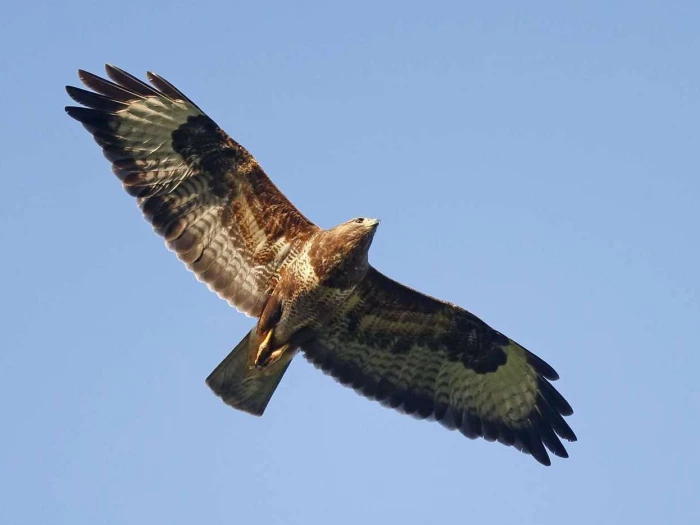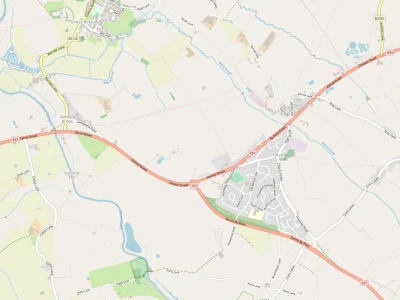Birds in Tarvin Community Woodland.
The Buzzard
(Bueto Bueto)
Click on the birdsong link if you want to listen to the cry of the Buzzard in a separate tab while you read this article:Buzzard Call
As a child, I remember listening to lines from the Rogers & Hammerstein musical, 'Oklahoma!'; and some of the words made an impact on my young mind. '... Every night my honey lamb and I, sit alone and talk and watch the hawk making lazy circles in the sky.' I asked my parents why we couldn't watch hawks circling and was told that there weren't any such birds of prey in Britain. Well, there are now! (Perhaps there may have been even then!) The buzzard is the commonest and most widespread bird of prey in the UK and is the most numerous of the diurnal bird of prey across the whole of Europe. (Diurnal means moving about in daylight and is the opposite of nocturnal, which is the term applied to a creature that moves about at night.) Many smaller birds such as crows and jackdaws see them as a threat and will pester them into moving from a particular tree or area by mobbing them repeatedly until they fly away.
The buzzard is a large bird, with broad, rounded wings, and a short neck and tail. When gliding and soaring it will often hold its wings in a shallow 'V' and the tail is fanned. Buzzards show variations in colour from all dark brown to much paler variations, but all have dark wingtips and a finely barred tail. Their plaintive mewing call could be mistaken for a cat! The buzzard is an opportunistic predator that can take a wide variety of prey, which It typically hunts from a convenient perch. It feeds mostly on rabbits but will take just about any small mammal, reptile and often carrion – the birds can occasionally be seen standing proudly on a piece of road kill defending it whilst they eat! However, when other prey is in short supply, they can sometimes be seen walking over recently ploughed fields looking for earthworms and large insects.
Pairs of buzzards mate for life. To attract a mate (or impress his existing mate) the male performs a ritual aerial display before the beginning of Spring. This spectacular display is known as 'the roller coaster'. He will rise high up in the sky, to turn and plummet downward, in a spiral, twisting and turning as he comes down. He will then rise immediately upward to repeat the exercise. Like most birds of prey, buzzards typically build a nest in trees, usually on the woodland fringes, and they are devoted parent to a relatively small brood of young. The female lays between 2 and 4 eggs, sharing the 33 – 35 day job of incubation with the male bird. The young leave the nest after a couple of months, becoming fully independent at around 5 months old. They will not become active breeders themselves until they are 2 – 3 years old.
Buzzards do not normally form flocks. However, several may be seen together if on migration or in a good habitat. As many as 20 buzzards have been spotted in one small area, though usually maintaining an average (safe?) distance of 30 metres from each other. Extremely territorial, fights do break out if one strays onto the territory of another pair.
Quick Links
Get In Touch
TarvinOnline is powered by our active community.
Please send us your news and views.









